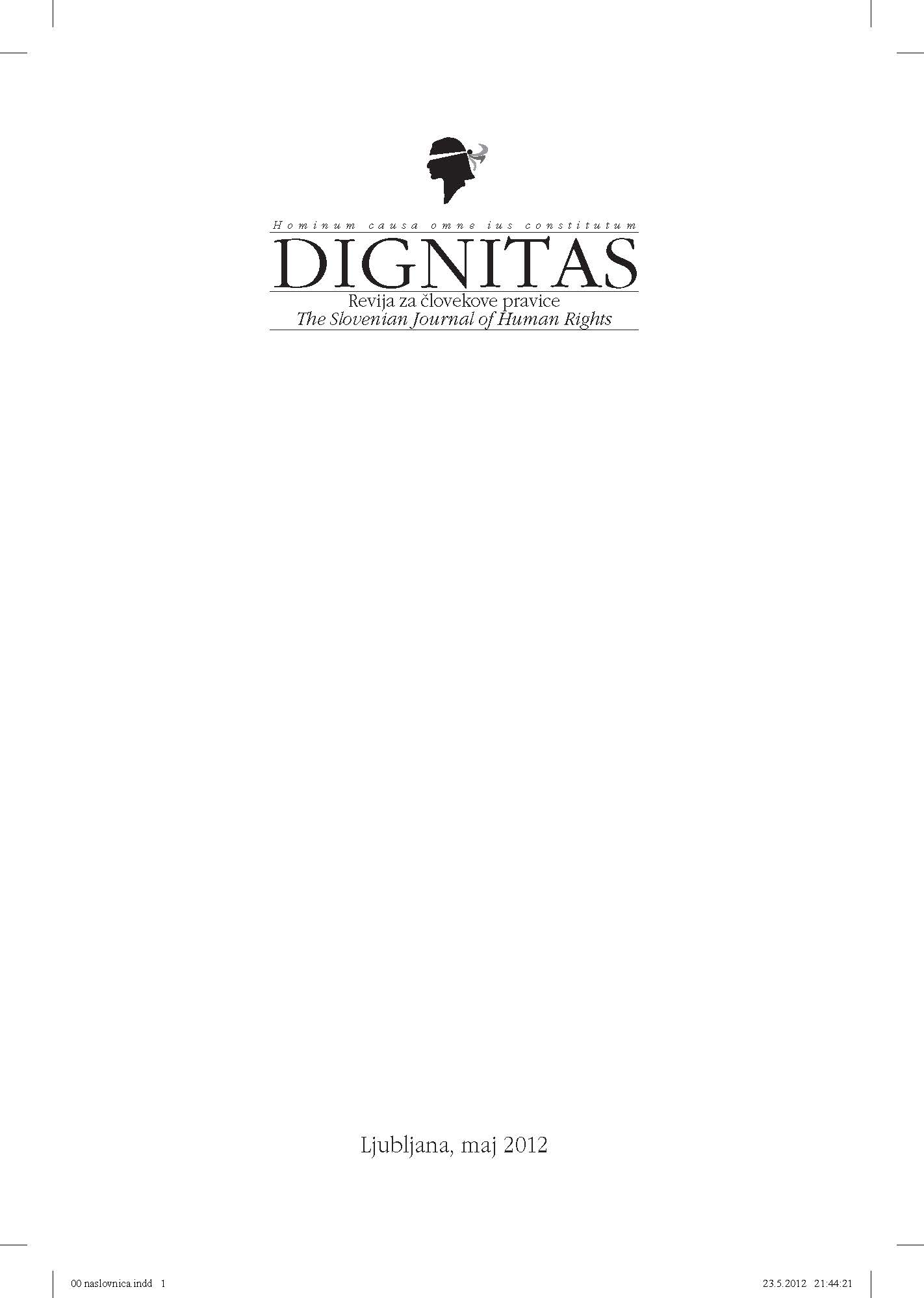Diplomatic manoeuvres involved in the creation of the United Nations Human Rights Council
Izvleček
One of the cardinal objectives of establishing the United Nations
after World War II was to promote and protect the human
rights of all nationalities. This is reflected in the Preamble of the
UN Charter which states that “We the peoples of the United Nations
are determined ... to reaffirm faith in fundamental human
rights, in the dignity and worth of the human person, in the equal
rights of men and women and of nations large and small”. On 15
March 2006, the UN General Assembly adopted a resolution to replace
the 60-year-old UN Commission on Human Rights with the
Human Rights Council due to strong criticism of its tolerance of
members known for their egregious human rights violations and
its highly politicised composition, voting and functioning. This article
seeks to examine the diplomatic manoeuvres employed by
the UN hierarchy and the Swiss government that made the establishment
of the new Human Rights Council possible.
References
Rights Council,” Centre for Human Rights and Global Justice, Working Paper Number 4, 2006
Almqvist J., The Human Rights Council: A Bold Step towards Effective Rights for All, FRIDE Comment,
Madrid: FRIDE, 2006
Annan K., High-Level Panel on Threats, Challenges and Change, A More Secure World Our Shared
Responsibility, UN Doc A/59/565 of 2 December, 2004
Arroba A. A., “The New United Nations Human Rights Council: What Has Changed?” Democracy
Coalition Project, Crossroads Vol. 6, No. 2 Washington DC. 2006
Blanchfield L., “CRS Report for Congress: The United Nations Human Rights Council” Congressional
Research Service Order Code RL33608 8 August 2006
Boll A.B., Switzerland Peace and Human Rights Promotion, Bern: Federal Department of Foreign
Affairs (FDFA) Directorate of Political Affairs DP, June 2007
Departament Federal D´Affars Exteriurs, “Creation of a UN Human Rights Council: Course of a
Diplomatic Initiative for the Creation of a UN Human Rights Council: Historical Background”
Documentation DFA Information, Berne, March, 2006
Ghandhi S., (ed.), Blackstone’s International Human Rights Documents 7th edn. Oxford: Oxford
University Press, 2010
Gupta S.P., International Law and Human Rights, 1st edn, Faridabad (Haryana): Allahabad Law Agency,
2009
Jean-Bernard M., La Commission des droits de l’homme de l’ONU, 1975
Jordan M., “New Calls for Reform of UN Rights Commission; Cuba’s Re-Election Last Week to the
Commission on Human Rights is Drawing Criticism from Rights Groups”, The Christian Science
Monitor Boston, 7 May 2003
KOFF Swisspeace, “UN Human Rights Council – Chronicle of a Swiss Diplomatic Initiative” KOFF-Newsletter No. 46, 1 April 2006
Kolb R., An Introduction to the Law of the United Nations, Oxford: Hart Publishing, 2010
Lagon M., “Deputy Assistant Secretary of State for International Organization Affairs, U.S. Department
of State”, Press Briefing of 25 April 2006
Maheshwari A., and Bhagwat M.B., Understanding Human Rights, 8th edn. Mumbai: Vipul Prakashan,
2007
Moeckli D., et al. (eds.), International Human Rights Law, Oxford: Oxford University Press, 2010
Schorr D., United Nations Reform in Context, Muscatine: Stanley Foundation, February, 2006
Steiner H.J., and Alston P., International Human Rights in Context: Law Politics and Morals, 2nd edn
Oxford: Oxford University Press, 2000
Tolley H., The UN Commission on Human Rights, 1987

This work is licensed under a Creative Commons Attribution-NonCommercial-NoDerivatives 4.0 International License.
Authors who publish with this journal agree to the following terms:
- Authors are confirming that they are the authors of the submitting article, which will be published (print and online) in journal Dignitas by Nova univerza, Fakulteta za slovenske in mednarodne študije. Author’s name will be evident in the article in journal. All decisions regarding layout and distribution of the work are in hands of the publisher.
- Authors guarantee that the work is their own original creation and does not infringe any statutory or common-law copyright or any proprietary right of any third party. In case of claims by third parties, authors commit their self to defend the interests of the publisher, and shall cover any potential costs.
- Authors retain copyright and grant the journal right of first publication with the work simultaneously licensed under a
Attribution-NonCommercial-NoDerivatives 4.0 International (CC BY-NC-ND 4.0)
that allows others to share the work with an acknowledgement of the work's authorship and initial publication in this journal. - Authors are able to enter into separate, additional contractual arrangements for the non-exclusive distribution of the journal's published version of the work (e.g., post it to an institutional repository or publish it in a book), with an acknowledgement of its initial publication in this journal.
- Authors are permitted and encouraged to post their work online (e.g., in institutional repositories or on their website) prior to and during the submission process, as it can lead to productive exchanges, as well as earlier and greater citation of published work.

